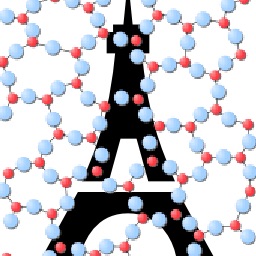Cycling through the glass transition: Evidence for reversibility windows and dynamic anomalies
Molecular dynamics simulations of densified glass-forming liquids, 2SiO2−Na2O, are presented. We perform a cooling/heating cycle across the glass transition, and important energy variations are obtained when the material relaxes at low temperature, leading to a hysteresis loop. However, for selected system densities, minuscule energy changes are found, revealing glasses which can be viewed as “thermally reversing,” in close correspondence with experiments performed in the context of isostatically rigid glasses. The topological constraint count of the atomic network structure shows that such “reversible” liquids adapt under the density-driven coordination increase, by experiencing larger bond-angle excursions at the atomic scale, quantified from the evolution with density of the Mauro-Gupta function q(T,ρ), which exhibits a broad minimum around 2.75g/cm3. The stiffening of the network structure is also evidenced from an inspection of the vibrational density of states, which shows an important decrease in the low-frequency contributions across the reversibility window. Dynamic anomalies are detected from the evolution of isothermal diffusivity with density, which underscore the possible generality of “glass reversibility” in densified tetrahedral glass-forming liquids.
